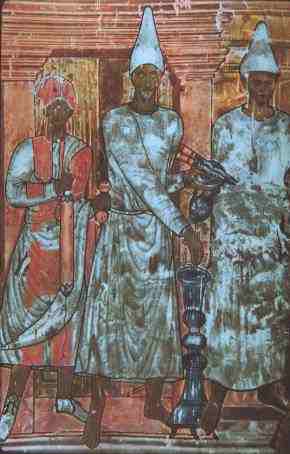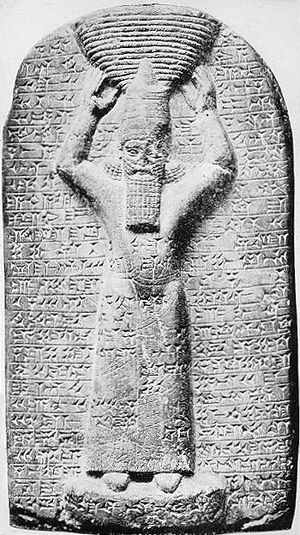
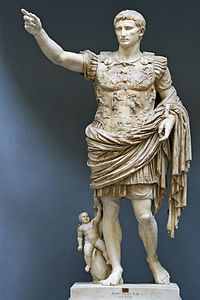

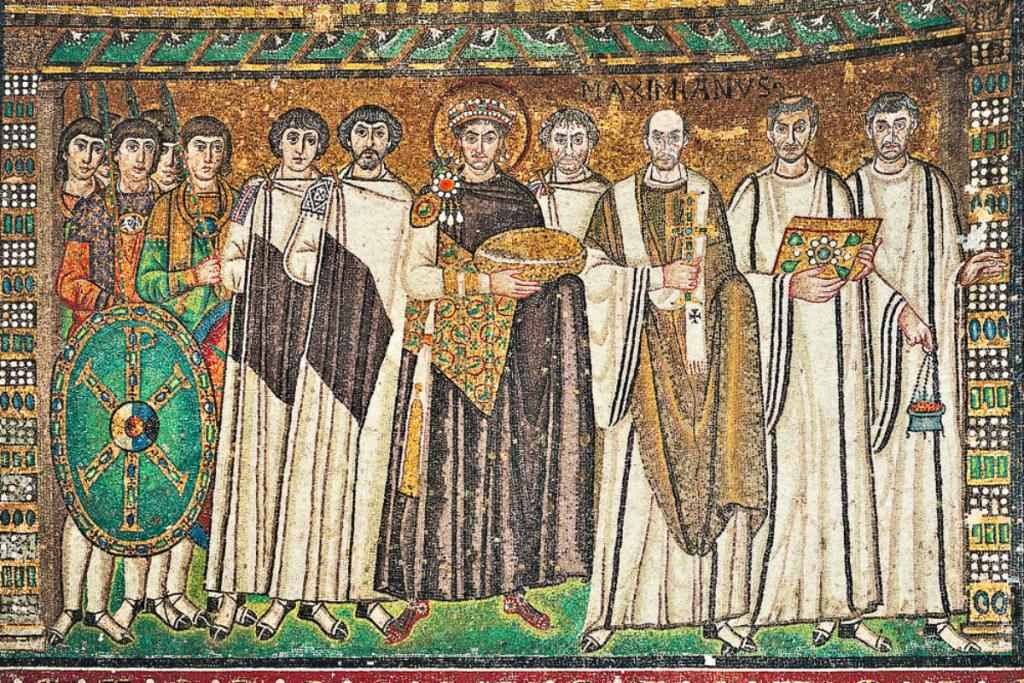
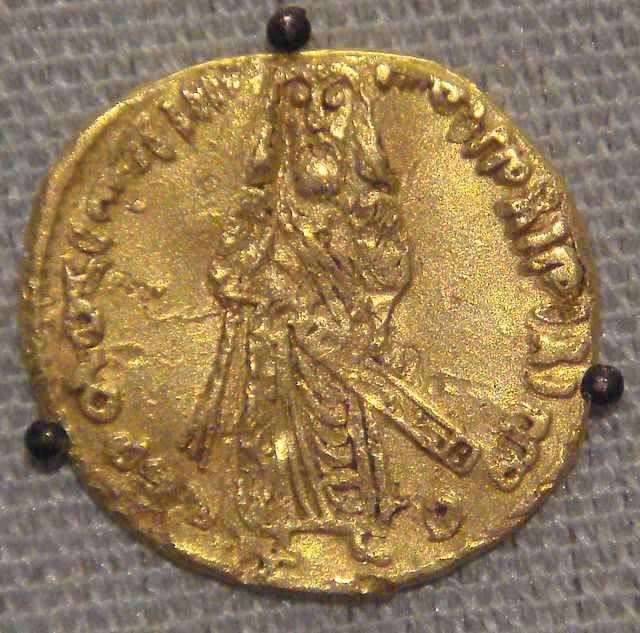

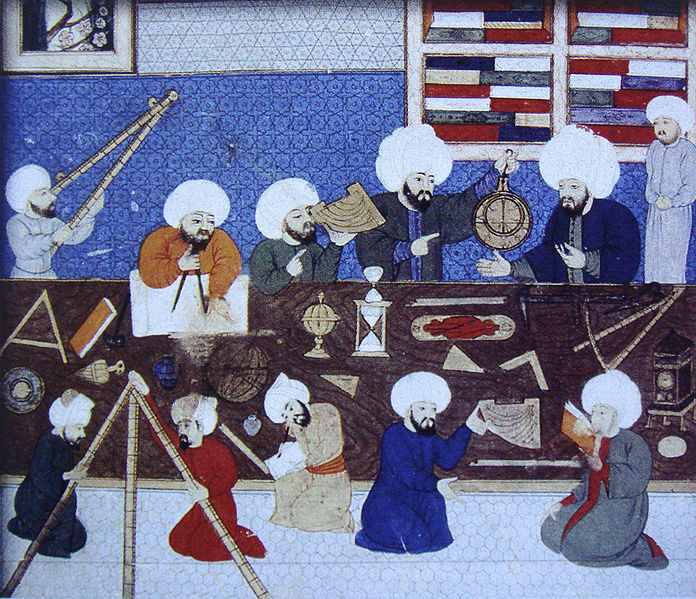
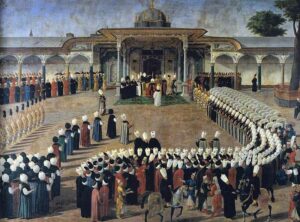 (First published in a shorter form in www.buhodle.post – Friday, July 5th, 2013)
(First published in a shorter form in www.buhodle.post – Friday, July 5th, 2013)
By Prof. Muhammad Shamsaddin Megalommatis
As commentary to an earlier article, a shrewd reader’s question hit at the very epicenter of today’s most critical problems of the Islamic world; the question was why the modern states, which were Ottoman provinces before being progressively detached from Turkey (from 1798 to 1918), namely Egypt, Algeria, Aden, Sudan, Tunisia, Eritrea, Djibouti, Oman, UAE, Qatar, Kuwait, Libya, Iraq, Syria, Lebanon, Jordan, Palestine, Yemen, and Saudi Arabia, cannot become – once for all – normal, independent states, and as such implement a proper nation building process, and demonstrate public order and discipline, while abiding by their traditions and cultures.
- Arab Spring can happen only to Pseudo-States
The question is very timely as the fake revolutions, fallaciously termed as ‘Arab Spring’ by the Freemasonic – Zionist mass media, proved to be the result of a sheer, yet systematic and sophisticated, manipulation of the local mobs by the secret services of the US, UK, France, Holland, Belgium, Israel, Canada, Australia, and eventually other Western countries (in coordination and for a rather long period that only recently showed its dreadful result).
To truly understand what has happened to the aforementioned destitute, wrecked pseudo-states, one has to correctly assess first how the leading Western countries are ruled, and to retrace the origin of their ruling system, before making comparisons. The essence of the administration, and of the ruling system of a country, determines the success of a state, society and people, irrespective of religion, culture, language, origin, past, and location.
In what is called today “foreign policy” at the local level and “international politics” at the global level, there is a most important element that eclipses all the rest, because it comprises of a most determinant set of rules as to how to successfully implement governmental plans and programs, promote national interests and concepts, and make national enemies’ plans fail. This element is called: “imperial government”. Of course, this is not openly admitted at any level, namely a) politics, foreign policy making and diplomacy, b) education and political science, and c) mass media and publications. On the contrary, a great effort id deployed to conceal and obscure this reality.
- The Origin of the Imperial Government
Imperial government existed in the Ottoman Empire indeed, and it was an excellent combination of two imperial governmental traditions, notably the earlier Caliphates’ governmental tradition and the Christian Eastern Roman governmental tradition; the first goes back to the 7th c. CE, whereas the second is relevant of the 4th c. CE (the times of the Christianization of the Roman Empire), and of the end of the 1st c. BCE (the initial period of inception of the Roman Empire). It is of seminal importance to notice that the Islamic Imperial governmental tradition, since its very beginning and the emergence of the Umayyad dynasty of Damascus, was always interconnected with the Eastern Roman governmental tradition; quite indicatively, Greek was the official language of the Islamic Caliphate for several decades until 701 before being replaced by Arabic – when the ‘contents’ of the notion of Imperial Government were fully transferred within the newly appeared state.
However, both lines of tradition rely on earlier stages of imperial government; the early Omayyad Caliphate was also formed under the strong impact of the Iranian Sassanid governmental tradition, which in turn depended on earlier Iranian dynasties’ governmental tradition (Arsacid, 250 BCE – 224 CE / Achaemenid, 550 – 330 BCE). Successively, Iranian imperial government was traced after the Assyrian – Akkadian Mesopotamian imperial governmental tradition that goes back to the middle of 3rd millennium BCE, when the original concept of the Universal State as Imperium was developed under Sargon of Akkad the world’s first and foremost forefather of emperors.
On the other hand, the Roman imperial government was formed under the strong impact of the Oriental imperial governmental tradition and due to a strenuous search for the concepts and the principles of other nations’ imperial governmental tradition. The Egyptian imperial governmental impact on Rome took also a strikingly religious and philosophical dimension, due to the diffusion of Ancient Egyptian cults, faiths, mysteries and ideologies across the Roman Empire; hundreds of temples dedicated to Isis, Osiris, Horus, Anubis and other significant representatives of the Ancient Egyptian Pantheon have been excavated in Italy, Greece and other Balkan states, Germany and Central Europe, France, Belgium, Holland, and England, as well as across the Iberian Peninsula. The academic series of publications EPRO – Etudes Préliminaires pour les Religions Orientales dans l’ Empire Romain (French acronym for ‘Preliminary Studies on the Oriental Religions within the Roman Empire’) contains more than 150 voluminous books, but nothing of all these reflections and representations of the historical truth was ever duly popularized in Europe, North America, and elsewhere.
The Roman search for the Ideal Imperium went back to Assyria too. Romans attempted to imitate and reflect attitudes, behaviors, thoughts and concepts of the Macedonian Emperor, and invader of Achaemenid Iran, Alexander the Great of Macedonia whose ideal imperial concept can be evidently retraced back to the 8th – 7th c. BCE Sargonid Assyrian Empire, the greatest of all the Oriental Empires. Several centuries after Alexander of Macedonia, the national poet of Rome stated that the new imperial capital should become a New Nineveh – the capital of the Assyrian Empire opposite today’s Mosul on the eastern bank of Tigris (Dicle) river.
Studies focused on the imperial governmental ideology and the history of the administration of the Sargonid Assyrian Empire lead to the conclusion that not any other later or earlier ideology had the intellectual vigor, the spiritual strength, and the philosophical universality of the Sargonid Assyrian Empire (722 – 609 BCE). All the later empires only imitated Nineveh, and always failed to reflect the Assyrian majesty and splendor in their entirety.
The Oriental Imperial tradition was transferred from empire to empire, and from the Orient to the Occident (the terms denote merely a geographical distinction – no cultural distinction), and although the tradition did not remain exactly the same, it survived down to the Ottoman Empire, the Safavid Empire of Iran, and the Mughal Empire of India.
At the same time, the imperial tradition was also preserved in several European medieval and modern states, namely the Holy Roman Empire of the German Nation (which was later known as Austria-Hungary), Spain, Russia, France, England, Germany, and Italy. However, in reality, all of them were mere shadows of the Christian Roman Imperial government in terms of Empire conceptualization, Imperial Universality, Government & Society contextualization, spiritual strength, and Weltanschauung; quite contrarily, they were far crueler and at times inhuman and barbaric.
- The End of the Imperium in the West, & the Villainous Freemasonic Lodge
The attested barbarism, lowly character, corrupt nature, villain attitude, and the ensuing overall vulgarization that were involved in modern European imperial states were only due to the slow but firm infiltration of the Freemasons. In this regard, it goes without saying that the degree of vulgarization corresponds only to the level of Freemasonic infiltration. The Ottoman Empire, Russia, Austria-Hungary, and Germany were far less vulgar than England and France as empire forms and ruling systems, because the latter two states were already in the 19th c. almost fully controlled by Freemasons.
When the apostate Freemasonic lodge failed to control a targeted empire through infiltration, subversion, coercion, and (at times) by forcing a compromise on the imperial family, other means were used to destroy it, namely ruse, deceitful alliances, wars, rebellions or a combination of methods. Freemasonry brought to power lewd, deviate, and monstrous villains with no moral compunction, and they became the new ‘elite’ (whereas in reality they could never be any) – only to contribute to the gradual erosion, advanced decay, and final demise of the Imperial Government system.
In this regard, the French revolution (1789) was an ignoble and hideous means by which the Freemasons brought down the Catholic Christian French Kingdom.
World War I was an enormous trickery aptly stage-managed by the Freemasonry-controlled pseudo-imperial (the term is used because the lowly and villain character of the rulers) governments of France, England, and the US in order to eliminate imperial states that were not controlled by the Freemasons (Austria-Hungary, Germany, Russia, and the Ottoman Empire).
With the rise of the Freemasonic involvement, the imperial government took a lewd, lowly, and vulgar character that is best portrayed in the latest imperial formation, e.g. the US administration which is well-known for its coarse and beastly officers, the likes of the disreputable Roosevelt, Truman, Johnson, Nixon, Reagan, Clinton, Bush and Obama.
- The Slow Decline of the Imperium in the Islamic World
Over the centuries, there were several negative developments within the Ottoman Empire (1301 – 1922), the Safavid and Qadjar Iranian Empires (1501 – 1736 / 1796 – 1925), and the Mughal Empire of India (1526 – 1857) that progressively brought decadence and decomposition to the three gigantic Islamic realms that controlled the whole territory from Atlantic to the Pacific. These developments were not economic or military of character; they did not reflect any ceremonial or protocol change within the imperial administration, nor did they result from any degeneration of the imperial system of rule itself.
Quite contrarily, the gradual phenomenon of the Islamic Imperial decadence was due to the slow diffusion and penetration of corrupt, false, barbaric, and disastrous theoretical, judiciary, and theological systems that cannot bring but decay and chaos wherever they appear and are allowed to survive. It was a quite long process that lasted no less than one millennium, although one can pinpoint some key moments. Actually, these developments had started even before the rise of the Ottomans, and are therefore integral part of Islamic History.
These negative developments consist in the widespread diffusion and adoption of un-Islamic, anti-Islamic, inhuman and barbaric theories and ideas that were successively composed by the lowest of the low theologians of Islam Ahmad ibn Hanbal (780 – 855), Ahmad ibn Taimiyah (1263 – 1328) and Muhammad ibn Abdel Wahhab (1703 – 1792). All three lived in different eras (with an approximate 400 years’ distance from one another), but had indeed a lot of traits, attitudes and behaviors in common; their succession involves also the fact that among them the posterior referred to the anterior as his ‘valuable’ theological master. All three were of lowly, uncultured and uneducated origin; they were rejected by their masters as wrong and incapable students of Islam; and they were imprisoned or pursued for heresy and rejection of the Islamic governmental authority, and for threatening the safety of the Islamic state.
Their pathetic and worthless pseudo-theories have had also a lot of common points. They came out of a limited background and were deprived of the basic perceptive abilities; during their poor studies, they had a minimal exposure to diverse fields of knowledge; they were totally unaware of other civilizations, cultures, philosophies and ruling systems; they totally misunderstood basic notions of intellectual life; they deeply hated any open-minded standpoint because it contained elements of which they had no clue; they loathed and reviled reason, reasoning, exploration, analysis, synthesis, comparison, argumentation and knowledge contextualization because their incapacitated minds fully prevented them from all key theoretical and academic processes; they were totally cut off from any spiritual dimension, and ended up as vicious nominalists and unconscious materialists.
What ensued from their personal failure was a reduced and false microcosm that they idiotically identified with what they thought that Islam is/was (or can be) and catastrophically tried to defend – at the calamitous detriment of real Islam that they never imagined, let alone understood.
They therefore reflected a simplistic approach to society, state and world affairs; as they hated knowledge and wisdom they turned out to be ignorant fanatics able only to stick to their silly assumptions and useless opinions. As their childish and worthless minds could never encompass the perplexity of the Islamic Imperial Government, they totally failed to grasp what was necessary for the Islamic Caliphate in order to prevail over its enemies.
Consequently, they totally disregarded the fact that their nonsensical ideas and catastrophic opinions would assuredly weaken the Islamic Imperial state – only to the benefit of the enemies of Islam. They calmly promoted misery and ignorance because of their limited mindsets, and they generated a downgrading spiral within Islam because of their attachment to their poor and execrable background from which they originated.
As they hated self-improvement and had actually no ability to properly learn and improve their mental and intellectual qualifications, they came up with reductionist, minimalistic structures at the antipodes of every cognitive system.
Their thought structures were all gravely anti-Islamic, because they triggered among followers the complete rejection of study, research and knowledge, thus spreading unadulterated barbarism of cataclysmic dimensions and consequences. Particularly Ahmad ibn Taimiyah can be credited with an effort to also alter and distort Islam, by diffusing polytheistic concepts – that he simply was not mentally and intellectually capacitated to assess in their proper dimensions and nature.
The evil followers of the above trashy, fake imams flattered all the weaknesses and all the vices of low, ignorant and villainous people whom they did not want to educate, empower and improve, but only use for their scheme to take control over the Islamic Government and impose their ignorant and idiotic opinions.
Through these evil methods, and after discrediting great philosophers and erudite scholars, prominent architects and artists, leading scientists and spiritual teachers to the eyes of the mob, the followers of the three fake imams managed to always widen their sphere of nefarious influence and to acquire a remarkable power within the society they lived in. Their gradual rise to predominance is also due to the fact that the Ottoman Empire was involved into too many war fronts (against Portugal in Eastern Africa, against Spain in Northwestern Africa, against Austria-Hungary in Central Europe, against Russia in the plains of Ukraine, and against Iran in the Caucasus and Zagros Mountains region) and the Sultans were reluctant to focus on and resolve their vast empire’s internal affairs. Similar developments took place in Iran and India. Of course, the above description is quite short and schematic; there have been many other theologians of lesser importance who followed in the path of the above mentioned three calamitous figures, further diffusing similar ideas and spreading decay and disaster.
- The Culmination Point in the Fight between Civilization and Barbarism within Islam
The negative results of the aforementioned developments started being noticed around 1580. The ignorant, uneducated, vulgar, and Satan-led mob that followed Ahmad ibn Taimiyah’s filthy concepts and silly ideas attacked the Istanbul Observatory and destroyed what was at the time the world’s most advanced Center of Learning and Research. Which was the reason? Science was unnecessary to them!
Founded by the leading astrologist and astronomer Taqieddin Efendi (Taqi al Din), the Istanbul Observatory was better equipped than Tyho Brahe’s in Central Europe (Uraniborg), whereas Taqieddin Efendi’s Zij (observational clock) was more advanced than Tyho Brahe’s and Copernicus’. This was due to the fact that, when Taqieddin Efendi petitioned Sultan Murat III to finance the construction and the equipment of the Observatory, he had in mind the famous Samarqand Observatory which had been constructed under the guidance of Ulugh Begh (1394 – 1449), one of the top Muslim erudite scholars of all times whose astronomical and mathematical texts were translated to Latin in 15th c. Europe.
The execrable and barbaric theologians and followers of Ibn Taimiyah knew that, if Islamic Knowledge and Imperial Power were diffused among the people and, in parallel, their ignorance and darkness were removed, the Ottoman Empire would control the entire world. But the true Islam and the Islamic Caliphate were very hateful to them, because they considered as ‘Islam’ their own Satanism and barbarism. Provenly acting under Satan’s guidance, they mobilized the mob against erudite scholars, scientists, astrologists and astronomers, they assassinated philosophers, artists and intellectuals, they disregarded Islamic Science, Literature, Philosophy and Art, they propagated a catastrophic lack of interest for the ‘other’, and they disreputably taught their ignorant and pathetic followers that Islam is just limited to prayer, fasting, and few other acts of worship – of which they did not know even the real meaning and reason.
This development greatly affected the Imperial Government of the Ottoman Sultans; more and more silly and uneducated people started working in important positions of the administration. Wherever practiced, the Imperial Government has always been linked with Knowledge and Science (in Islam, Christianity, Rome, Iran, Egypt and Assyria). The reason is simple: you cannot govern an empire without perceiving correctly, knowing in detail, and understanding in-depth. No empire can exist without Spirituality, Wisdom, Science, Intellect, Art and Ethics. And villains like Ahmad ibn Hanbal and Ahmad ibn Taimiyah have none of them.
Deprived of spirituality, the Islamic prayer is a worthless form of verbosity. The same is actually true for any prayer performed by any adept of any religion anytime anywhere. However, the anti-Islamic and barbaric theological systems that prevailed among Muslims due to the increased diffusion of the heretic opinions and vicious teachings of ibn Hanbal and ibn Taimiyah progressively eliminated every trace of spirituality among Muslims.
Similarly, deprived of spirituality, the Islamic fasting is just an odd and incomprehensible diet. Worse, as it is practiced today, within the – largely undetected by the Muslims – materialistic culture that enveloped Islam during the colonial and postcolonial times, Ramadhan fasting can become an explosion of fabulous, Lucullan iftars (meals) at the antipodes of the very principles that stand behind the concept of Islamic fasting.
The above are only two examples of de-conceptualized and de-contextualized, fake Islam that prevails widely among today’s Muslims who are fully unaware of the development that took place progressively from generation to generation due to the encrustation of the aforementioned alien theological systems on the main body of the Islamic beliefs.
Compared to the Imperial Government in Islam (which is what we call the Islamic Caliphate – Islam’s top materialization on Earth), the Islamic prayer and fasting are merely two important elements of cult; nothing more. But the prevalence among Muslims of a de-conceptualized, de-contextualized and de-spiritualized cult entailed also the emergence of a de-valorized perception and understanding of the Islamic Government, e.g. the Islamic Caliphate.
Many countries can survive and have actually survived for centuries after the local people lost their original spirituality and faith; this situation certainly represents a form of decadent culture, but the concepts of rule, law, government and discipline can be still intact and strong, sustaining a powerful administration and a formidable military force for generations.
But when the spirituality of the Caliphate, the concept of God’s representative on Earth, the entire semiotic context of the Islamic Imperium, and the real value of the Islamic Government are lost, then the average fake Muslim has a viciously false, desecrated idea about his ruler, and the total and final collapse comes fast.
This means that the Satanic systems of Ahmad ibn Hanbal and Ahmad ibn Taimiyah eroded the Islamic society from inside, and in the process, they did not only alter the Islamic faith but also weakened the Islamic state by destroying the average Muslims’ concept of, devotion in, commitment to, reliance on, and passion for, the Islamic Empire.
In the Golden Age of Islam, for the high administrators of Abbasid Baghdad or Umayyad Andalusia, and for the magistrates of other great states of the Islamic Ages, the performance of prayer was a secondary matter of minor importance, because serving the Caliphate was already a spiritual dimensions’ service of the utmost value. Their focus was therefore on the Spirituality, Knowledge and Art of Governing; when all this went lost because of Ahmad ibn Taimiyah’s villainous barbarism, the Islamic Empire underwent its final downfall.
What today’s idiotic sheikhs and uneducated imams fail to understand is that, if the prayer and the fasting are harmful to the Supreme Power of the Caliphate (the Islamic Imperial Government), they are rejected by Allah and become ultimately a curse for the hypocrites (munafiqun) and the infidels (kuffar) who only impersonate the Muslims, without truly being faithful. This is so because the top interest, concern and commitment of a Muslim should be the consolidation of Islam’s power in this world, and this involves as top priority not a fake prayer and a ridiculous fasting but a wholehearted contribution to the supremacy of the Islamic Caliphate.
In fact, there cannot be any Islamic prayer that is good for a Muslim when the act of the prayer is due to a state of mind that can harm the Islamic Imperial Government in any sense.
- The Freemasonic Colonial Powers and the Collapsed Islamic Imperium
In the modern times and for the past 200-250 years, due to the ignorance and idiocy imposed among Muslims by the Freemasonry-led Western colonial countries through the fabricated by Western academia, un-Islamic and anti-Islamic system of ‘Political Islam’ or ‘Islamism’, the outright majority of the Muslims failed to understand that, in the material world, Islam equals Islamic Caliphate, and when the Islamic Caliphate does not exist, there is no Islam.
But I am digressing. To go back to the original subject and terminate the present brief analysis, I should add that, when the Freemasonry-led Western colonial powers entered into competition and undertook their expansionist policies, they sent their agents in the lands of Islam. These agents presented themselves as travelers, scholars, explorers, etc. and as such they were allowed to cross and observe / study the Islamic lands; this was certainly a terrible mistake and a great part of naivety from the part of the Islamic authorities which can be interpreted as an indication of the advanced decay. The Western agents reported back home the disastrous situation that prevailed in the Islamic World (Ottoman Empire, Iran, India and other territories in Asia, Europe and Africa). Even in the case of militarily strong countries (like 17th century Ottoman Empire), the local societies were already rotten, tenebrous and barbaric, because of the widespread diffusion of the perverse and Satanic ideas of Ahmad ibn Hanbal and Ahmad ibn Taimiyah that had meanwhile prevailed in even larger scale one way or another, eliminating Spirituality, Wisdom, Science, Exploration, Philosophy, Aesthetics and Ethics, and turning the already de-spiritualized religion of Islam into a ridiculous judicialized pseudo-religion of do’s and don’ts, a worthless nominalist dogma of uncultured and uneducated imams and sheikhs, and a materialist theory accepted by followers only because of the rewards ‘promised’ in the Hereafter for their orthopraxy.
The Freemasonic Anglo-French plan to eradicate Islam, which means to eliminate the Islamic Imperial Governments (because without them there is no Islam in this world), was now in motion. As the central power of the Islamic World was the Ottoman Empire, it became the main target of the English and the French agents, explorers, businessmen, military, academia and diplomats. In prominent position among them, there were the Orientalists: those who unearthed archaeological evidence, deciphered epigraphic material, published textual records, conceptualized and contextualized the past of the targeted countries as per the interests of the colonial powers, and in brief, robbed the Heritage and the Identity of the Orient from their own owners without them even imagining of what they were losing…..
The Western diplomats, agents and academics knew very well that the local people were idiotic and ignorant, silly and trashy, because of the diffusion of the teaching of Ahmad ibn Hanbal and Ahmad ibn Taimiyah, and they concluded that, although Muslim, they would be easy to manipulate and cheat, because their idiocy marked them with a catastrophic lack of sophistication. And they were right. Unadulterated coercion was thus to apply to them. And it did, quite successfully.
Psychologically inferior, poor, and ignorant, the local Egyptians (of 1798 and onwards) and Algerians (of 1830 and onwards), if compared to the knowledge and the sophistication of the French explorers, linguists, archaeologists and historians who flooded these two detached Ottoman provinces, would look like a brainless, silly, and uneducated child in front of a leading savant, a distinguished academician, and an erudite discoverer or inventor.
As the provinces were progressively cut off from the capital (after Egypt and Algeria, it was the turn of Aden, Sudan, Tunisia, Eritrea, the Arabian coast of the Persian Gulf, Oman, Libya, Palestine, Jordan, Lebanon, Syria, Iraq, Yemen and Arabia), there were no local forces to understand (let alone achieve) the level of sophistication of the Imperial Government at a time the enemy invaded their lands. Due to the diffused ignorance, even Istanbul was a shadow of the Imperial Government of the great old times of Suleiman the Magnificent or his father and predecessor, Selim I.
Thus, Islam’s top achievement in the world, the Devlet-i Ebed-müddet (“The Eternal State”), was abandoned – first in Egypt and in Algeria and later in the other detached provinces – by the corrupted materialistic followers of the pseudo-Islamic theologians Ahmad ibn Hanbal and Ahmad ibn Taimiyah, all those who did not want to die for the real Islam, but to survive like rats in the colonial regimes’ fake and distorted Islam.
The complete collapse of the Islamic World happened indeed in 200 years (1580 – 1798), and once the ultimate demolition of Islam was triggered with Napoleon’s expedition to Egypt, there was no apparent force in the Islamic Caliphate (let alone its detached provinces) to oppose the imperial sophistication of the Western colonial powers.
Worse, not even one person from the entire Islamic World managed to detect as early as 1800 or 1830 the ultimate end of the Freemasonic Anglo-French plots and conspiracies. This is indeed the chronicle of a death foretold. The end of Islam came in less than a century later, and what is even more striking is that the idiotic sheikhs, uneducated imams, and pseudo-Islamic universities of today fail to understand and admit that, following the dissolution of the Caliphate, there is no more Islam on Earth.
- What it takes to launch the True Islamic Caliphate today
Today, the re-establishment of the Islamic Caliphate would certainly solve all the troubles of the Islamic world, but there is no driving force to lead this development. There are no true Muslims – with the necessary spirituality, with the demanded wisdom and knowledge, with the required ethics and morals, with the indispensable accurate perception and assessment of the ‘other’, and with the much needed evaluation and judgment of Islam’s complete collapse and disintegration – who would be up to the task of re-inventing and implementing the Islamic Caliphate.
In fact, all those fake Muslims who, fanatic in their pseudo-faith and extreme in their worthless opinion, want to defend ‘Islam’ fail to realize that you can never protect what you never properly identified, learned, understood, and abode by. This tells much about what today’s primary task for the Islamic World is; Muslims must first reject themselves, fully deny their false self, liberate themselves from their corrupt mind, replace their ignorance with original knowledge, and abolish their false faith for true Islamic spirituality. For today’s fake Muslims, the top priority task is the proper re-birth in the historical Islam, and the parallel rejection of all aspects of today’s mindsets, attitudes, behaviors, lifestyles, opinions, interpretations, teachings, beliefs, assumptions, socio-political organization, and public & international affairs.
Re-discovering the Islamic Imperial Government and Islam, as Science, Art, Ethics, Religion, Culture, and Civilization, will not be an easy task. Actually, the proper study of the Islamic Imperial Art of Government (in total opposition to today’s villainous politics and in full rejection of today’s pseudo-Muslim gangsters who serve these evil purposes) is a very complicated task. It has always been so.
When the Ottoman Caliphate was still functioning as a proper Imperial Islamic Government (certainly up to 1580), it was never an easy task for an indigenous young man to study, familiarize with, and become an expert in the Imperial Government. It would take 10 or 20 years of diverse studies and associated training for someone to become a successful Ottoman, Iranian or Mughal Indian administrator. It was a complex and sophisticated curriculum that eclipsed those of the other great powers’ administrators. It goes without saying that this curriculum was not as miserable and as cheap as studying religion today with a sheikh in pseudo-Islamic universities like Al Azhar, Madinah, etc.
As a matter of fact, religion and fiqh (Islamic Jurisprudence) were only a very small part of the Imperial Government Curriculum; there were many other more important subjects to study and learn for someone wishing to serve as an administrator, expert or adviser in the Imperial Islamic Government. To put it better, being part of an Islamic Imperial Government took a major life effort. Of course, Imperial Government meant about all continuity; people live and die, but imperial administrations live as long as an empire pursues successful policies and reproduces the class of its wise potentates, high caliber administrators, and formidable magistrates. The ruling class of an Imperial Government is therefore bound to always reproducing itself through incessant preparation and enrolment of worthy, valuable young men who can become successful rulers after pursuing long studies.
As it can be easily surmised, this process always happens in the capital cities of the empires. A mere farmer in Clairmont Ferrant (France), Sfax (Tunisia) or Taiz (Yemen) is good for nothing, when it comes to Imperial Government.
- Ottoman Provinces turned to Colonies, and then to Fake States
The top concern of the French and the English in their centuries long, multifaceted confrontation with the Ottoman Empire was to progressively detach provinces, and corrupt the local societies through a long list of vicious policies of alteration and disfigurement in order to achieve an advanced level of de-Islamization.
But as the detached provinces of the Ottoman Empire were cut off from Istanbul, the Islamic Imperial Government tradition was lost for those territories whereby the Western powers selected the filthiest and the unworthiest of the local population, i.e. all those who were ready to betray their true country (e.g. not the detached province that was merely a technical entity, but) the Ottoman Empire and cooperate with the invaders – a behavior that is tantamount to high treason and comprehensive betrayal and denial of Islam.
As per the typical colonial method, the local administrators of the colonial powers sent often these corrupted traitors back to Paris or London to convert them from uneducated agents to sophisticated traitors of their own country in order to subsequently appoint them as heads of the shameful local colonial administration that was setup only to exploit the detached province to the benefit of the enemy and occupier (i.e. the French and the English). How can one expect that a trashy person of this lowly behavior may ever be able to rule his country and, in doing so, mighty enough to oppose empires?
Take as example an uneducated, trashy and idiotic person, like Gamal Abdel Nasser! He did not pursue even a minimal part (one hundredth) of the study required to be an administrator of the Imperial Government. If one compares Gamal Abdel Nasser’s worthless curriculum, which was a mere copy of Western doctrine (so, automatically rejected as per the original Islamic standards), to that of the high magistrates of Abbasid Baghdad, Umayyad Andalusia, and Ottoman Istanbul, one understands how lower, more cowardly, more ignorant, and more impotent Gamal Abdel Nasser was to resume governmental positions. And of course he may have never reached any, had the Americans not initiated him in the secrets of being a filthy agent at their service and therefore able only to execute order given by kuffar, which is tantamount to betraying one’s religion, harming one’s country, and ridiculing oneself.
Where did Gamal Abdel Nasser or any other worthless and pathetic local ruler, Qadhafi, Saddam Hussein, Hafez Assad, Bourguiba, Buteflika, Anwar al Sadat, Mubarak and their likes, learn how to become an effective and worthy administrator of the Islamic Imperial Government? Already they never imagined, let alone understood what the Islamic Imperial Government is. Instead of it, their world was that of filthy (and genuinely anti-Islamic) ‘politics’, i.e. the vulgar, hideous and lowly manner of Freemasonic ruling that was first implemented in England and France (when the Freemasons prevailed in these two countries) and thence exported to the rest of the world.
The above-mentioned self-disastrous gangsters studied in military academies, universities and institutes, but there was no Islamic Imperial Government tradition anymore in their countries, so they could not possibly study the Art of Islamic Imperial Government. The same concerns other Muslim countries like Iran, Pakistan, Bangladesh, Indonesia, etc. In fact, when an empire collapses, the Imperial Government disappears, the tradition is lost, and after centuries of colonialism, the new, idiotic, ignorant and useless elite that comes to surface (only through the scrupulous colonial filters) acts like typical slaves of the English, the French and the Americans. This is what actually occurred in every country that is today inhabited by Muslims, be it a ‘republic’ or a ‘kingdom’. If Kemal Ataturk’s Turkey constituted an exception, it is always useless to remember that the exception confirms the rule.
So, how could one expect Gamal Abdel Nasser, a silly street boy and a worthless soldier, to properly serve the interests of his country the nature and the dimensions of which he could not even understand and assess?
And this concludes the case of the present gangsters who rule the detached provinces of the Ottoman Empire without having the chance even to imagine what the Islamic Imperial Government is (or can be) and how the great powers of the West are governed. They can only be valueless, one-use puppets at the hands of the foreign enemies of the Islamic world, e.g. the administrations that methodically destroyed the Islamic Caliphate and nowadays continue their nefarious policies of identity distortion, heritage disregard, social-cultural alteration and deformation, and economic robbery against the Oriental (not only the Islamic) countries.
These trashy and brainless idiots-turned-gangsters can only have the calamitous end that they deserve. The principles of the Islamic Imperial Government are always there, even though the Islamic Caliphate collapsed. These principles can never be removed. Similarly, the Islamic Ethics are always there, and no foreign government or local high traitor can ever remove them. Anyone who opposes them simply prepares an ominous end for himself and a permanent damnation for his soul.
- Issues of Islamic Imperial Government – a Model Country
To take matters more closely, I will now focus on a country that is rather viewed as ‘peripheral’ to the Islamic world, without however being so. This wrong consideration reveals the vast and detrimental ignorance that prevails among the world’s Muslims as regards the Islamic Imperial Government, which is the most important part of Islam, when it comes to social affairs, irrespective of what the ignorant, criminal, and Satanic sheikhs of Al Azhar and Madinah may think or say. The country-example is Somalia.
In Somalia, there was an Islamic Imperial Government tradition. Perhaps, it was not at the level of Damascus, Baghdad, Cairo, Istanbul, Isfahan, Delhi or Granada, but it was quite typical for countries located at the Islamic World’s geographical margin (North Nigeria, Mali, Central Asia, and Indonesia). In all these cases, local emirs and sultans referred to the Caliph as the principal authority in terms of Islamic Imperial Government, and therefore maintained close and harmonious contacts with the capital of the Caliphate. In the History of Islamic Somalia, the Islamic Imperial Government tradition was embodied in various Empires like the Sultanates of Ifat, Adal, Warsangali, Majerten, Hobyo, Mogadishu, Ajuran, and Geledi.
In the moment of its greatest expansion (basically 1500-1600), the Islamic Caliphate – viewed not only as the Ottoman Empire, but holistically as central Caliphate and regional dependencies – was a very decentralized form of state and a great part of the decision-making process was delegated to the regions. This was able to happen exactly because the Art of Islamic Rule was widely diffused and elaborate forms of Government bound with Spirituality, Science and Exploration were attested even in faraway places.
A typical example is the Great Somali Emperor Ahmad ibn Ibrahim whom the Somalis have been used to call Gurey in Af Somali, their language. More recently, due to the colonization, the Somalis too have lost the Islamic Imperial Government tradition, and as consequence, they have been by now used to call Emperor Ahmad ibn Ibrahim merely a ‘sheikh’ or ‘imam’, not an Emperor as they should. This means that today’s Somalis do not understand what is and what is not important.
Quite contrarily, the neighboring barbaric Abyssinians always call ‘emperors’ the diverse series of filthy and incestuous soldiers whose mothers were prostitutes, and who were at times appointed as thugs-in chief of their barbaric realm. To add perjury to their list of crimes, the Amhara and Tigray Abyssinians fallaciously attribute their origins to Solomon (Hz. Suleyman) who – of course – never got married with the Yemenite (not Abyssinian) Queen of Sheba (contrarily to their lies), and consequently never had a son named Menelik. The false myth of Menelik was forged only lately within their vulgar, hideous and fallacious literature named ‘Kebra Negast’ that dates back to the end of the 13th c. CE; no earlier literature in any language mentions this forgery.
However, even before 100 years, the Somali dervishes at Taleh seem to have preserved the basics of the Islamic Imperial Government tradition in their opposition to the criminal Freemasonic gangsters of England.
It is totally wrong to assess that the Taleh dervishes made a war upon the English just for religious purposes; this is exactly what the colonial thugs of the vulgar, lowly, and pseudo-royal government of England wanted to diffuse in order to misrepresent the epic struggle of the Taleh dervishes for National Independence and Imperial Islamic Government.
Following the vicious, racist, anti-Somali propaganda of the worthless English, their regional puppets, e.g. the Wahhabi bogus-Muslims of Saudi Arabia and the Amhara – Tigray Tewahedo (Monophysitic) cholera of Abyssinia, started also pretending and diffusing the filthy falsehood as per which the Taleh dervishes fought to establish a radical, Islamist and extremist religious state. This is a vicious lie.
The Somali dervishes and the great King Muhammad Abdallah Hassan rejected the English presence, because of their faith in the Islamic Imperial Government, i.e. the Caliphate, and its values and principles that are the only to allow Muslims to live in a noble Islamic way and to arrange their societies as per Islam’s virtues and spirituality, and in full rejection of the Amhara incestuous barbarism, and of the Western modernism and materialism.
The Somali dervishes and the great King Muhammad Abdallah Hassan had kept the Imperial Government tradition vivid in their hearts and minds. They knew quite well that this was what the inhuman English beasts wanted to uproot in order to spread materialistic perversion and utter barbarism in the Holy Islamic Land of Somalia.
And this is in fact what exactly today’s Somalia is missing. If the true spirit and the original spirituality of King Maxamed Cabdille Xasan is recaptured and rekindled, the filthy gangsters of the English and American administrations will stop calling this Great African Hero as ‘Mad Mullah’.
In our effort to recapture King Muhammad Abdallah Hassan’s spirituality and vision of Islamic Imperial Government, we have to study his own model: the Great Emperor Ahmad ibn Ibrahim who preceded him by 400 years. Spirituality deprives anyone and anything of the worthless notion of time, because in the spiritual world that the Taleh dervishes so much sought after there is no time. This means that the Great Anti-Colonial Hero Muhammad Abdallah Hassan was able to see his own model, Emperor Ahmad ibn Ibrahim (Gurey), just face to face. He was able to grasp the very deep meaning of Gurey’s acts and targets.
This is exactly what today’s Somalis have failed to achieve, as they have been plunged in the useless materialist concerns and approaches generated during 23 years of Civil War and because of the ensuing dependence of a significant portion of the Somali economic and political class on the vicious, Satanic, Western capitals.
Yet, the only means to ensure the reunification, rehabilitation and reinstatement of the Somali Nation is the re-acquisition of the spirituality of the Taleh dervishes. Today’s Somalis need to delve in the values and the virtues of the Islamic Imperial Government as revealed by the action of Emperor Ahmad ibn Ibrahim (Gurey). In fact, to do so, today’s Somalis have only to realize a key point: between the Great Emperor Ahmad ibn Ibrahim (Gurey) and us today, there is less than one minute distance. Not 500 years!
It was not by mere coincidence or due to simple hatred that the Great Emperor tried to extinguish the cursed and inhuman race of the Amhara. He knew very well that, if they survived, they would attempt to turn the entire Eastern Africa into a hell of barbarism, ignorance, bestiality, fornication and incest – elements that were already noticed by the early 16th c. Somalis as the basic constituent traits of the worthless and lowly Amhara society. To the visionary Emperor, it was crystal clear that the utmost barbaric society would be – to the incestuous Amhara – a ‘paradise’.
We, now, taking into account the Rastafarian description of their villainous and Satanic ideas, we can understand how clairvoyantly Emperor Ahmad ibn Ibrahim (Gurey) assessed the situation and wanted to disperse and annihilate the Amhara pestilence; Rastafarians promote filthiness, incest and every other bestiality, while believing that the entire African continent will be called Zion when their fake Messiah comes. Rastafarians did not properly exist before 500 years, but the core of their beliefs existed already among the pseudo-Christian Amhara, and this was well known to the Great Somali Emperor Gurey who did his best to cancel the then forthcoming hardships of his illustrious nation, the Somalis. It was quite clear to Emperor Ahmad ibn Ibrahim that the Amhara evilness would end up at the End of Times (Al Yom al Ahar) with siding with, and offering their state to, the Antichrist (Masih al Dajjal).
Perfectly well versed into the concepts and the notions of the Islamic Imperial Government, Emperor Ahmad ibn Ibrahim won, prevailed over, and dispersed the barbaric Amhara realm. However, the Emperor’s real enemy proved to be the colonial Portuguese maritime force that was sent urgently to oppose him.
The Portuguese, who were infiltrated and guided by Freemasons, searched to find the dispersed Amhara soldiers – who were left with no state due to the great victories of the Great Emperor Ahmad ibn Ibrahim. The Portuguese managed to save and reorganize the dispersed Amhara (and thus to preserve them for the Freemasonic plots of the Latter Day), and they engaged the Somali armies in several battles. The Islamic Imperial Government was evidently considered by the Western European Freemasons as the main enemy, because they knew that sooner or later they would prevail over the Catholic Church in Western Europe, and that the Islamic Caliphate was what really stood on their way to setup a barbaric global state of Satanic nature.
The Portuguese Freemasons knew that they had to defeat the Great Somali Emperor through ruse in the battlefield, in order to allow the evil, incestuous Amhara to survive until a later and greater colonial involvement would setup a closer Amhara – Anglo-French – American – Ashkenazi Zionist cooperation in view of the forthcoming appearance of the Antichrist (Masih al Dajjal) whom the evil forces are anticipated to accept as the true Messiah.
When the later colonial involvement took place, 300 years after the assassination of the Great Somali Emperor Ahmad ibn Ibrahim, the English and the French helped the Amhara expand from their tiny and unimportant barbaric kingdom to all directions (north, south, west, east) and invade the greatly civilized nations of the Oromos, the Afars, the Kaffas, the Hadiyas, the Sidamas, the Ogadeni Somalis, and others who have been held captive within the barbaric tyrannical state of Abyssinia (fallaciously re-baptized as Ethiopia) over the past 160 – 60 years (as per case).
Pictorial documentation:
Assurbanipal – Emperor of the Universe (Sar Kissati) & Emperor of Assyria
Octavian Augustus, First Roman Emperor
Sassanid Iranian Emperor Khusraw (Chosroes) I Anushak Ravan (Immortal Soul)
Justinian I – the greatest Eastern Roman Emperor
Coin of Umayyad Caliph – having striking similarities with Sassanid Iranian coins
Nasir al Din al Tusi, one of the greatest astronomer and erudite scholars of Islam, 13th c.
Istanbul Observatory 1577
Sultan Selim III at the Top Kapi Palace in 1789

